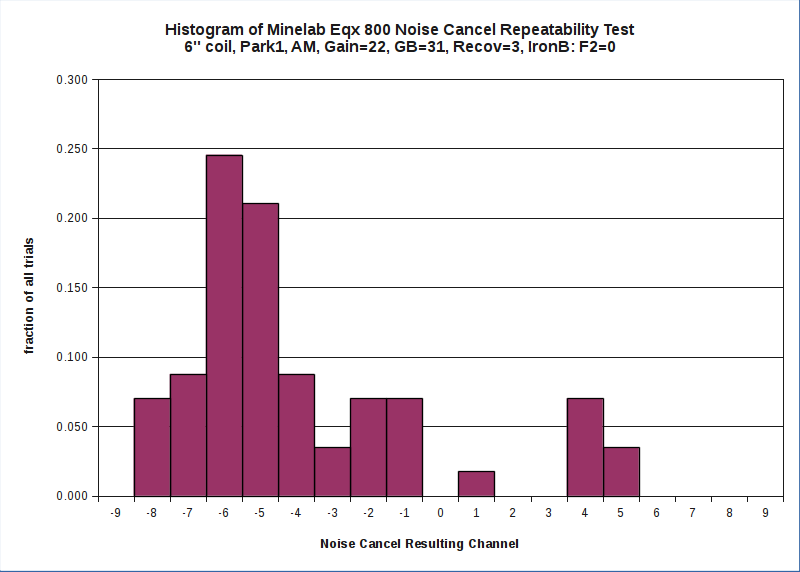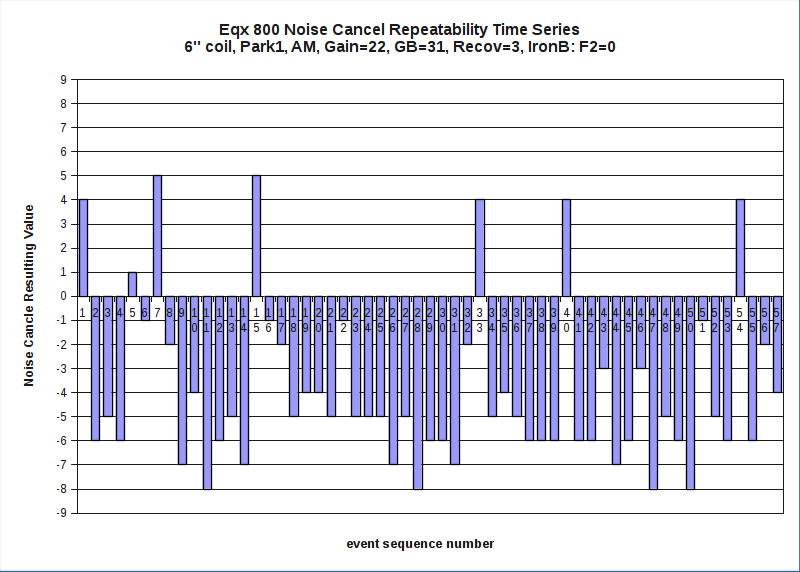-
Posts
5,804 -
Joined
-
Last visited
Content Type
Forums
Detector Prospector Home
Detector Database
Downloads
Everything posted by GB_Amateur
-
Looks like a harmonica to me. Here's a website with a good assembly drawing: https://musicianswebstore.com/harmonicas_howitworks.asp I've never found a wood comb, only the (metal) reeds.
-
Likely your mod did alleviate the problem sufficiently to get the unit cool enough to operate again. However, I suspect those clear plastic loose fitting covers suffer from the greenhouse effect. This is the reason interiors of automobiles build up such high temps in the sun: https://scienceline.ucsb.edu/getkey.php?key=1606 Do you use these covers to protect from saltwater spray?
-

First Accessory Coil For The Simplex
GB_Amateur replied to Jackpine's topic in Nokta / Makro Metal Detectors
The Kruzer came out in early 2018 (not sure of the first delivery dates). Here's a thread Steve started shortly afterward: I don't expect the aftermarket coil manufacturers to wait too long for Simplex+ coil offerings. Another kudo to Nokta/Makro for cooperating with the aftermarket coil manufacturers to provide better options for their customers. And if you take that statement's potential double meaning as a slam at detector manufacturers who don't, well, I'm not going to object.... -

Detailed Review Of White's Goldmaster 24K
GB_Amateur replied to Steve Herschbach's topic in White's Metal Detectors
Is there an audio response in the ground scan mode which allows you to track the magnetization without having to watch the mineralization bar on the screen? -

Park Detecting And The Equinox
GB_Amateur replied to afreakofnature's topic in Minelab Equinox Forum
Like most any kind of detecting, it depends upon conditions. The best times to hunt are when the ground is moist. Then the plugs you dig come out in one nice piece and return to the ground the same way, with no sign the ground was ever disturbed. If the ground isn't rocky (and doesn't contain tree roots) the Predator Raptor: https://www.predatortools.com/collections/handtools/products/model-31-c-raptor is the way to go under those conditions. But, again, that requires the perfect conditions. Most of the time it's either too dry (leading the plug to break into a mess of pieces) or the ground is too rocky. The small (standard) Lesche does well in rocky soil. In that case you can cut a plug to the depth of the rocks and go from there. Although a lot of people like to use the serated edge of the tools to cut the roots, IMO that's a bad idea on park and school property, ever. I've filed off the teeth on my Lesche and I also carry a 1" wide garden spade for working between roots. The real problem comes when the ground is dry (like it's been for me the past couple months). If you happen to be in a park where the sod isn't very good (lots of bare ground between the grassy splotches and/or lots of weeds) then you don't hurt anything by just digging and replacing the dirt. But if you're in decent sod you must either resort to the screwdriver method or just wait for rain. If you read the park rules (online or posted on site) and follow them you should be fine. If detecting and digging aren't mentioned then you should be in the clear. (That's my attitude and it works for me.) You hear and read horror stories about getting hassled but I'm going on 1000 hours hunting public parks and schools and have never had a problem. One time a citizen approached with concern but when I explained my technique and showed the trash I remove he came over to my side. Another time a concerned school teacher came running, afraid I wasn't filling my holes but when she saw I did she retreated. I've seen dozens of park and school employees and a few policemen and none has ever expressed a single objection. Maybe I just live in a friendly, tolerant town. -

Hello From Tucson! Sorry It Took So Long....
GB_Amateur replied to microsniper's topic in Meet & Greet
Welcome, Mike! I'm predicting even more gold for you (and less for other Tucson area hunters) as you become more involved here. -
Welcome cntrydncr1! You've come to the right place. All those characteristics and preferences of yours are discussed here somewhere, in spades. You're in good company now. 😁
-
Where are you located and what are your goals? I see a lot of advice on gold detecting, but if you aren't in an area where gold lives, the best gold detector ever made (or every one of them, for that matter) won't find you gold. If you're in a non gold producing area then I assume coins/jewelry/relics/caches are what you're after. In that case the choice of detector will likely be different. And maybe you already have a detector. Speak up and give us some deteails!
-

Steve's 2019 UK Adventure
GB_Amateur replied to Steve Herschbach's topic in Metal Detecting For Coins & Relics
It amazes me that they don't consider this worth keeping, technicality or not. I guess that's good for you in some ways, but it's their loss, IMO. Anyway, the UK system beats the heck out of ours. -

Steve's 2019 UK Adventure
GB_Amateur replied to Steve Herschbach's topic in Metal Detecting For Coins & Relics
Ok, Steve, you've branded yourself as a full-fledged, dyed-in-the-wool relic hunter. No turning back. Of course you can still hunt for the common, easy stuff in your spare time. 😁 Did your two ancient finds go to the government for evaluation & deterimination of ownership, etc.? And I don't recall reading if your gold find from last year has been settled. -
Although I've downplayed comparison videos, and this one has weaknesses, I will say they went to a lot of trouble both in burying the targets (in the mud) and trying to be fair. As many of you, I didn't come away saying "there's a clear winner", but that alone is impressive. Makro/Nokta's $255 (US) "introductory" detector would have been considered a 'flagship' by other companies not that long ago. There seems to be a lot of comparison here between companies and their perceived intentions. I'm as guilty as anyone on that front. But standing back for a moment and looking at the big picture, rather than to denigrate the companies that are falling behind, I think we should instead be impressed with what Nokta/Makro has done in the few years they've been around. The Racer was a good detector and they themselves have left that one in the dust with how many more recent products? It seems like they have a new, better detector on the market a couple times per year! I was dormant in my detecting during what appears to have been the heyday decade for innovation(?) of the 1990s (plus or minus). I wonder if any of the players back then were as on-fire as we've seen with Nokta/Makro.
- 19 replies
-
Welcome, Dogjello! You've got some good country there to hunt, and a couple fine detectors to do that with. Good fortune and keep us updated with your finds.
-
If bronze cents are coming in that low, where are Zincolns?
-

Minelab Vanquish Controls & Display Plus Coils
GB_Amateur replied to Steve Herschbach's topic in Minelab Metal Detectors
Are you familiar with the Gray Ghost Gold Series with 3.5 mm (1/8") plug? Rob has them: https://www.robsdetectors.com/detectorpro-gray-ghost-gold-series-headphones-for-minelab-equinox-series-or-gold-monster-1000/ -
Yes, Minelab is annoying in more ways than one. But if their detectors give us the best chance to perform in the field, then all that annoyance is tolerable.
-
Yes, it's white. There is a Nugget Finder decal (with a miner holding a glistening rock in one hand and a metal detector in the other) but I don't see any 'SL' designation anywhere. Does sound like what you describe otherwise. Thanks for the encouragement. Stay cool in that Arizona desert, literally and figuratively.
-
Well, I guess I should take my own recommendation. In my backyard I turned the gain to a value that had some EMI noise, but not a crazy amount. Then I repeated the Noise Cancel procedure for about 10 minutes. Here are the results -- the 57 datapoints in time order and a histogram of those data: I need to repeat this test in a different location for comparison sake, but at this point it seems that running several Noise Cancels (say 10 or so) and then choosing the most frequent (or something in the neighborhood) would make sense. For example, here I would choose either -5 or -6.
-
That's quite the cairn you've built on your scale! 😁 Are you in US or Australia? I have the NF 7"x14" but haven't gotten into the goldfields to try it out. (Mine is not an Advantage version, though.) Your results have me intrigued.
-
Nice find! It appears that originally this item was flat and someone along the line decided to bend it into its current shape. The 'sterling' mark gives you a lower bound on how early this piece is. Here are some webpages you may want to browse: https://en.wikipedia.org/wiki/Sterling_silver https://www.realorrepro.com/article/Confusing-marks-on-silver-and-silverplate https://www.kovels.com/identification-help/silver-identification-guide.html According to the above articles, the simple mark 'sterling' was used in Ireland and US, but since found in this country it is more likely the latter. Although a US industry standard was declared in 1868, apparently that backstamp was used for some time prior. Most likely, though, it was made after 1868. AFAIK that backstamp is still used today. I notice the inscription 'INRI' on the decorated face of the cross. This is common in Catholicism: https://en.wikipedia.org/wiki/Jesus,_King_of_the_Jews#The_INRI_and_ΙΝΒΙ_acronyms but doesn't really help much determining its age. A history of the property you were searching might give you more clues.
-
Is this experience independent of whether you're using FE or FE2 settings?
-

Newbie Needs Detector Advise For Large Cache
GB_Amateur replied to malter's topic in Metal Detector Advice & Comparisons
Actually it is very size dependent. In his 1985 book Modern Metal Detectors, Charles Garrett says the 2-box TR is capable of finding 'large objects' at depths of 15-20 feet (4.5 to 6.0 meters). How much this is deteriorated by ground mineralization is the big question. New, the Fisher Gemini III 2-box detector is $650 on Ebay. Used (but no transferable warranty) I've seen them go for less than $400. -
Well, that's a revelation to me. I have the 5th Edition, but mine is called Illustrated Field Edition. It has 50 normally numbered pages plus about 10 roman numeraled intro pages. The title page says Fifth Edition. Revised October 1997 First Printing 1,000 copies, Original Copyright 1988, First Printing 1984. Size (closed) is 5.25" X 8.5". Included (spine stapled) in the central crease is an even smaller (4.25" X 7.0") Prospecting and Detecting for Hard Rock Gold 16 page monograph. In the Intro he says "now in October 1997..." and goes on to say "my sequel ADVANCED Prospecting and Detecting for Hard Rock Gold is strongly recommended for any serious students...." I wasn't aware that the full edition has 4 times as many pages. Guess that explains why I thought I got such a good price.
-
I know people would rather hear/read answers but I don't have any of the latter, yet. However, I do have a question/concern. Many, including I, have noticed that quite often hot rocks will hit in the nickel zone (TID's around 12). That's in Gold mode, at least. I'm wondering if this new Fe2 filter might help with that, either directly in the Gold modes, or indirectly in other modes such as Field 2.



